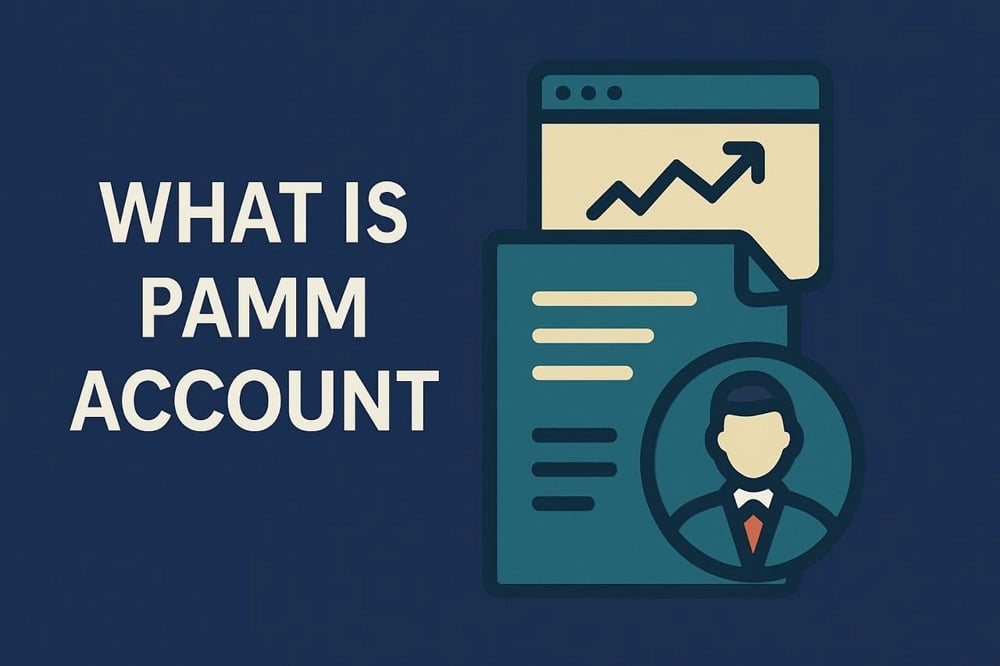How PAMM Investment Works
PAMM (Percentage Allocation Management Module) is a financial mechanism that allows investors to allocate funds to a skilled trader, who manages these funds alongside their own capital. The trader, also known as a PAMM manager, executes trades on behalf of all participants, and profits or losses are distributed proportionally according to each investor’s share.If you're unfamiliar with the basic concept of PAMM, it's worth starting with a broader introduction in our guide on what PAMM means in trading.
This article explains how PAMM investment works in practice, including the structure, processes, and key roles involved.
Key Participants in the PAMM System
Every PAMM account involves three primary roles:
Investor: Allocates funds into the PAMM account to be traded by the manager.
PAMM Manager: A trader who controls and executes trades with both personal and client funds.
Broker: Provides the platform and infrastructure that records, allocates, and settles all trades and transactions.
The system is designed to maintain strict proportionality in allocations, ensuring that investors share in profits and losses based on the ratio of their deposit to the total account balance.
To understand the foundational concept, see What is a PAMM account — a full guide for beginners.
Capital Pooling and Trade Execution
Once an investor chooses a PAMM manager, the funds are deposited into a broker-managed PAMM account. Although technically pooled, these funds are still accounted for individually. The manager can now trade the total balance as a unified account, without accessing individual investor accounts directly.
Each trade's outcome is allocated proportionally. For example, if the account grows by 2% in a day, every investor sees a 2% return on their share — minus applicable fees.
This system enables scalable investing without requiring investors to actively manage trades.
Fee Structure and Profit Sharing
Managers typically earn money through:
Performance fees: A percentage of profits earned for investors (usually 20–50%).
Management fees: Fixed periodic charges (monthly or annually).
Incentives from the broker: For attracting volume or consistent trading.
The performance fee model ensures that the manager is motivated to generate consistent returns — although it can also incentivize risky behavior in some cases.
A deeper look into whether PAMM accounts are profitable can help you weigh the trade-off between returns and risk.
Transparency and Risk Monitoring
Most PAMM platforms provide dashboards with real-time analytics, including equity curves, drawdowns, trade history, and allocation breakdowns. However, detailed strategies or open trade data are often hidden to protect the manager’s methods.
It’s crucial for investors to evaluate both transparency and risk metrics before allocating capital.
If you're concerned about capital security or reliability, read Are PAMM Accounts Safe? for an in-depth risk breakdown.
Legal Infrastructure
PAMM structures are offered by many brokers, both regulated and offshore. While the concept is legal in many jurisdictions, its regulation varies.
Some regions classify PAMM as portfolio management and require licensing. Others treat it as a broker service with limited investor protection.
We advise verifying the legal status of PAMM accounts in your country before depositing funds.
Step-by-Step Investment Workflow
Here's how the typical PAMM investment process works:
Account Creation: Sign up with a broker that offers PAMM services.
Manager Selection: Use the broker’s rankings and stats to choose a manager.
Capital Allocation: Choose the amount to invest and link it to the manager’s account.
Monitoring: Track performance through a dashboard provided by the broker.
Withdrawal or Reinvestment: Investors can usually withdraw or reallocate funds according to broker policies.
This structure allows even small investors to access professional trading strategies without needing direct expertise.
Final Thoughts
PAMM investing simplifies the process of tapping into active trading by letting professionals manage your funds. However, it’s critical to understand how this system works, how risks are distributed, and what your rights are as an investor.
FAQ: Understanding PAMM Investments
What is a PAMM account?A PAMM account is a system where investors allocate money to a trader, who manages and trades a pooled fund. Returns (or losses) are distributed proportionally. See What is PAMM Account for a full breakdown.
How does profit sharing work in PAMM?Profit is divided based on each investor’s share in the account, after deducting the manager’s performance fee. To see when PAMM accounts are actually worth it, read Is a PAMM Account Profitable?.
Are PAMM accounts legally protected?Legal protection depends on the broker and country. Some brokers operate under regulation, while others are offshore. Learn more in Are PAMM Accounts Legal?
Are PAMM accounts safe for beginners?PAMM accounts can be risky, especially with aggressive managers or poor transparency. See Are PAMM Accounts Safe? for risk considerations.
Is PAMM investing passive?Yes — once invested, the manager handles all trading. You only need to monitor results.









Comments
PAMM offers a smart way for investors to leverage expert trading without the stress of managing their own accounts.